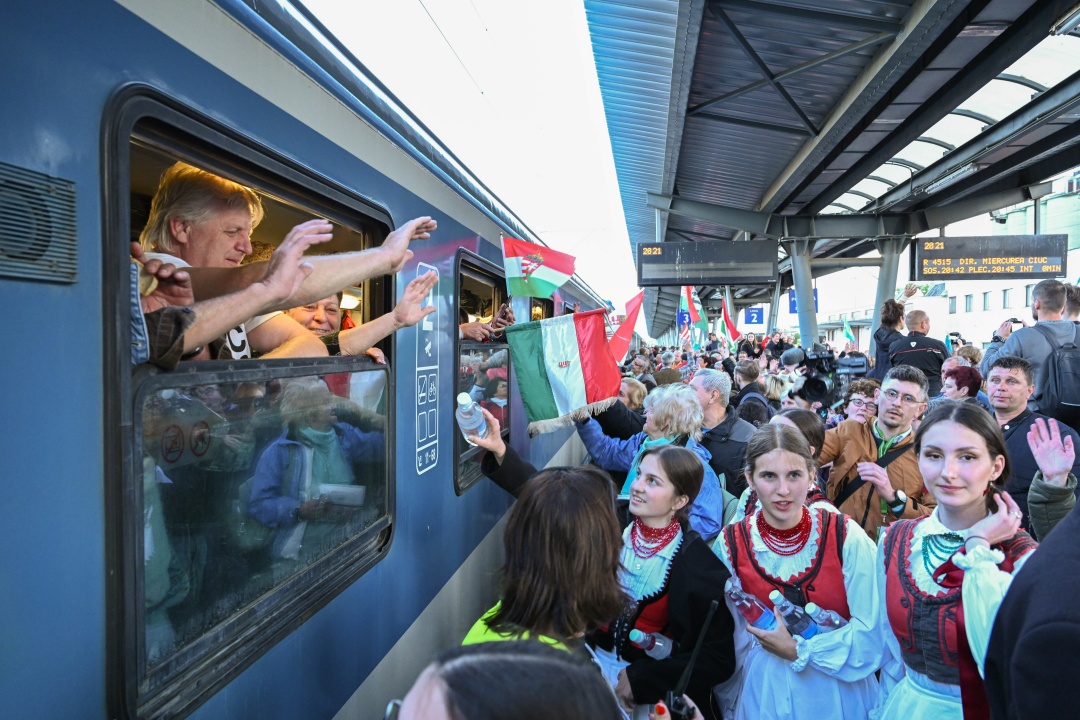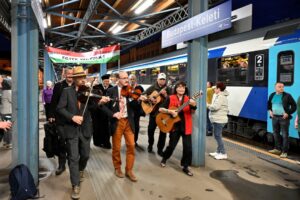
The Hungarian Heritage House is holding an online workshop for people interested in the practice of painting the Shalanky Easter eggs.Continue reading

The Székely Gyors (Szekler Fast Train) and Csíksomlyó Expressz (Șumuleu Ciuc Express) pilgrimage trains will once again travel to the Pentecost pilgrimage in Șumuleu Ciuc (located in Transylvania, Romania), organized by the Kárpáteurópa Utazási Iroda (Carpathian Europe Travel Agency) and the Hungarian state railway company MÁV.
The four-day program, running from June 6 to 9, will feature key events such as the Marian feast in Șumuleu Ciuc, the Pentecost pilgrimage, and a journey to Ghimeș (Gyimes), at the historical thousand-year-old border of Hungary.
Tibor Mező, the managing director of Kárpáteurópa Utazási Iroda, explained that the Csíksomlyó Expressz will depart from Szombathely near Austria and continuing down the northern border of Hungary, passing through Sopron, Kapuvár, Csorna, Győr, Komárom, and Tatabánya before arriving at Budapest Keleti railway station. There, it will be connected with the Székely Gyors, and the two trains will continue their journey to Transylvania together. The pilgrimage train will reach Szeklerland via Southern Transylvania.
On Saturday, pilgrims will attend the Pentecost Mass at the Marian shrine in Șumuleu Ciuc. On Sunday, they will travel to Ghimeș, where they will participate in another Mass at the thousand-year-old border and take part in the Pentecost festivities. The pilgrimage trains will return to Budapest Keleti station around midnight on the final day of the program.
This year’s special guest is Jászai Mari Award-winning actor Sándor Sasvári, who will perform multiple times during the four-day journey, including at the thousand-year-old border.
Other guests include Liszt Ferenc Award-winning artist Kamilla Dévai-Nagy and a musical ensemble that will play traditional music from the regions the train passes through. The locomotive pulling the train will be decorated in honor of writer Áron Tamási, added Tibor Mező. László Kormányos, CEO of MÁV, stated that the trains will be equipped with dining cars and an audio system for passenger convenience. He also highlighted that MÁV considers group travel important, with nearly 30,000 group trips organized in 2024, facilitating over a million journeys, ranging from small groups of a few dozen to large groups exceeding a thousand passengers.

Departure of the Székely Gyors and Csíksomlyó Expressz pilgrimage trains to the pilgrimage before departure from Budapest’s Keleti Railway Station, 2024; Photo: MTI/Lakatos Péter
György Petrus, company director of Kárpáteurópa Travel Agency, said that
the train is expected to consist of 16 carriages, including two dining cars. Passengers will receive continuous updates about sights along the journey via the train radio. The national pilgrimage train will be nearly half a kilometer long.
Since their launch in 2008, the Székely Gyors and Csíksomlyó Expressz pilgrimage trains have traveled more than 36,000 kilometers and carried 19,000 pilgrims. Journalist Ágnes Frigyesy, president of the Budapest Szekler Circle (Budapesti Székely Kör), announced that donations will be collected onboard for the benefit of Csángó children in Ghimeș-Făget (Gyimesbükk).
According to legend, the first pilgrimage to Șumuleu Ciuc took place in 1567, when John Sigismund, the Prince of Transylvania, attempted to force the Catholic szekler people to convert to Unitarianism by military force. The people gathered in Șumuleu Ciuc on the Saturday before Pentecost, prayed for the help of the Virgin Mary, and defeated the prince’s army at the Tolvajos Pass in the Harghita Mountains. Following their victory, they returned to Șumuleu Ciuc to give thanks and vowed to make the pilgrimage every year on the Saturday before Pentecost.
Via MTI; Featured picture: MTI/Kátai Edit